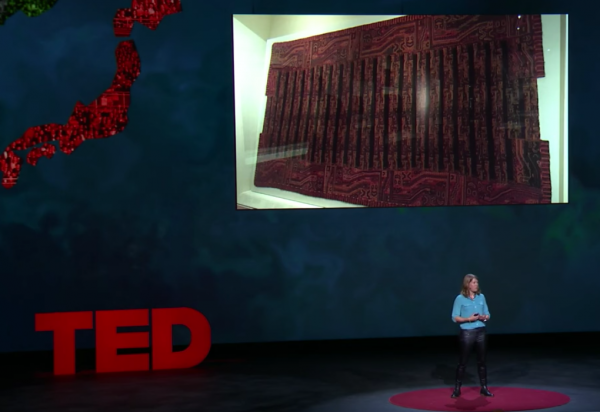By R.See, | February 01, 2017

Dr. Sarah Parcak, a space archeologist, spearheaded the project drawing funds from the prize money she obtained from her TED conference. (YouTube)
GlobalXplorer, a crowdsourced website, is set to launch a campaign which allows the public to locate potential archaeological locations using satellite imagery.
Dr. Sarah Parcak, a space archeologist, spearheaded the project drawing funds from the prize money she obtained from her TED conference, BBC News reported.
Like Us on Facebook
The website will allow members of the public to scour through its database of satellite imagery of Earth for potentially yet-to-be-discovered archaeological sites.
Dr. Parcak stated that their team also encourages members to help prevent looting from these sites. The team of researchers had stripped the images of tiles of geolocation data to prevent ill-mannered citizens from using the website as a guide for looting.
The hunt for hidden man-made structures would be aided by software, which would make use of an algorithm to analyze changes on the surface of the Earth that could very well indicate that a remote area could harbor a potential archaeological site.
The unconventional technique has already proved to be useful as previous ventures resulted in the discovery of 17 possible sites that indicate ancient pyramids; about 3,000 human settlements; as well as rediscovering 1,000 tombs in Egypt.
Dr. Parcak created the website with the hopes of encouraging more people to get involved in archaeology; particularly in the discovery and preservation of these long lost structures.
GlobalXplorer will be initially launched with a database limited to the satellite imagery of Peru, but its creators are aiming to expand its scope within the year, Ars Technica reported.
Members of the public who accessed the website would be shown a tutorial guiding users to the website's tools, as well as the legend of which the researchers follow.
The website would forward critical data to Dr. Parcak's team of researchers when an area of interest receives a minimum of six flags from users. It would be only then that the team of experts would assess whether the area of particular interest is worthy of on-site exploration.
-
Use of Coronavirus Pandemic Drones Raises Privacy Concerns: Drones Spread Fear, Local Officials Say

-
Coronavirus Hampers The Delivery Of Lockheed Martin F-35 Stealth Fighters For 2020

-
Instagram Speeds Up Plans to Add Account Memorialization Feature Due to COVID-19 Deaths

-
NASA: Perseverance Plans to Bring 'Mars Rock' to Earth in 2031

-
600 Dead And 3,000 In The Hospital as Iranians Believed Drinking High-Concentrations of Alcohol Can Cure The Coronavirus

-
600 Dead And 3,000 In The Hospital as Iranians Believed Drinking High-Concentrations of Alcohol Can Cure The Coronavirus

-
COVID-19: Doctors, Nurses Use Virtual Reality to Learn New Skills in Treating Coronavirus Patients







